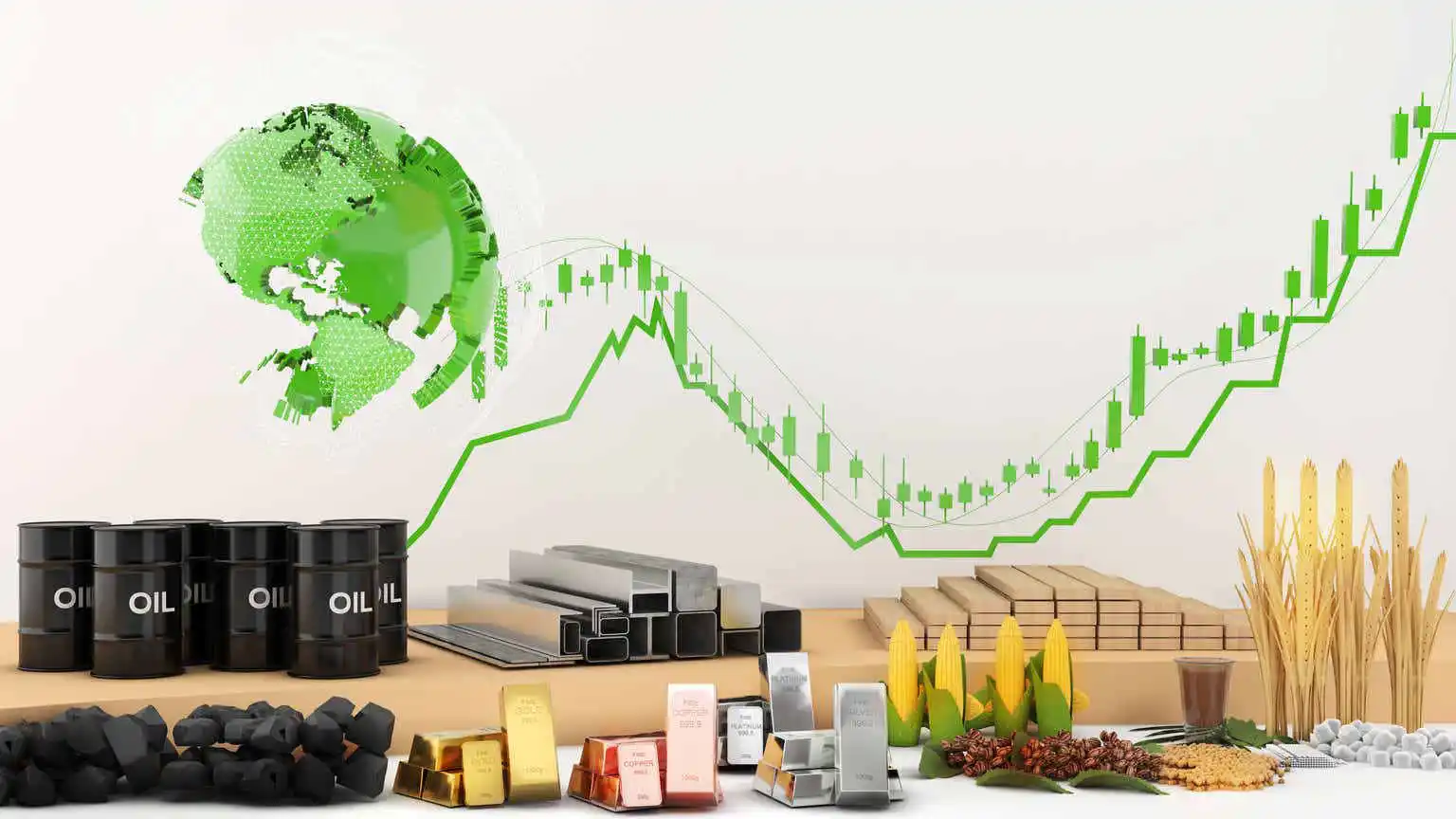
In our interconnected world, understanding the “Global Investment Landscape” is paramount. It’s a realm where capital flows globally, shaping economies and markets. This article explores the complexities of this landscape, offering insights into the forces that drive global finance.
Global investments encompass a diverse range of assets, from stocks and bonds to real estate and alternative investments. They hold the promise of wealth creation but also pose risks that demand careful consideration.
This journey through the global investment landscape will delve into core concepts, key players, investment types, and strategies. We’ll also examine the myriad factors influencing decisions, from economic conditions and geopolitics to technological advancements and sustainability.
Beyond finance, this landscape mirrors our world’s economic, political, and environmental realities. Whether you’re an investor, a novice, or a curious global citizen, join us in exploring the profound impact of capital movement across borders. Together, we’ll navigate the intricate web that defines our “Global Investment Landscape.”
I. The Basics of Global Investments:
In the modern era of finance, global investments serve as the cornerstone of wealth accumulation and financial security. At their core, global investments involve the allocation of capital across international boundaries to take advantage of diverse opportunities and mitigate risks. This section unravels the fundamental principles that underpin global investments, providing a solid foundation for understanding this dynamic field.
- Definition and Significance
- Begin by defining what global investments are: the allocation of funds across borders to various assets such as stocks, bonds, real estate, and more.
- Explain the significance of global investments in diversifying portfolios and potentially increasing returns.
2. Historical Context
- Delve into the historical evolution of global investments, tracing their roots from early trade routes to the modern, interconnected financial markets.
- Highlight key moments in history that shaped global investment practices, such as the globalization of financial markets.
3. Diversification and Risk Management
- Emphasize the concept of diversification – spreading investments across different asset classes and regions – as a key strategy to manage risk.
- Discuss how global investments can help investors hedge against economic downturns in their home countries.
4. Currency Exchange
- Introduce the concept of foreign exchange (Forex) markets and their role in global investments.
- Explain how currency exchange rates can impact the value of global investments and the importance of currency risk management.
5. Investment Vehicles
- Describe various investment vehicles common in global investing, such as mutual funds, exchange-traded funds (ETFs), and international bonds.
- Highlight the advantages and disadvantages of each vehicle.
6. Regulatory Considerations
- Briefly touch upon the regulatory aspects of global investments, including tax implications and compliance with international financial regulations.
Understanding the basics of global investments is crucial for anyone looking to explore the world of international finance. This knowledge not only helps individuals make informed investment decisions but also provides insight into the global economic landscape, where the flow of capital is a driving force that shapes economies and markets.
II. Key Players in Global Investments:
The world of global investments is a vast ecosystem where various entities play pivotal roles in shaping financial markets and allocating capital across borders. Understanding these key players is essential for comprehending the intricacies of the global investment landscape.
- Governments and Sovereign Wealth Funds
- Governments: Many governments actively participate in global investments through their central banks and sovereign wealth funds (SWFs). They hold significant foreign exchange reserves and invest them in various assets, including foreign currencies, stocks, bonds, and infrastructure projects.
- Sovereign Wealth Funds (SWFs): SWFs are state-owned investment vehicles that manage a country’s reserves and generate returns over the long term. Notable examples include Norway’s Government Pension Fund Global and Abu Dhabi Investment Authority.
2. Multinational Corporations
- Multinational corporations (MNCs) engage in global investments to expand their operations, seek growth opportunities, and manage cash reserves. They may invest in foreign subsidiaries, joint ventures, or diversified portfolios to optimize returns and reduce risk.
3. Institutional Investors
- Pension Funds: Pension funds invest on behalf of employees to ensure sufficient retirement income. They allocate assets globally to achieve long-term growth.
- Mutual Funds and ETFs: These investment vehicles pool funds from numerous investors to create diversified portfolios. They often invest globally, providing individual investors with access to international markets.
- Insurance Companies: Insurance companies invest premiums collected from policyholders in a variety of assets, including global bonds and stocks.
4. Individual Investors
- Individual investors are a critical part of the global investment landscape. They participate through brokerage accounts, retirement savings, and personal investments. Access to global markets has become more accessible through online platforms and investment products.
5. Investment Banks and Asset Managers
- Investment banks and asset management firms facilitate global investments by offering financial products and services. They manage portfolios, provide investment advice, and engage in global financial markets on behalf of clients.
6. International Organizations
- International financial institutions like the International Monetary Fund (IMF) and the World Bank play roles in global investments by providing financial assistance to member countries, promoting economic stability, and facilitating international development projects.
6. Non-Governmental Organizations (NGOs) and Foundations
- Some NGOs and foundations engage in global investments to support their missions. They may invest in ethical or impact-driven projects that align with their goals, such as sustainable development or poverty alleviation.
Understanding the roles of these key players is essential to appreciate the intricate web of global investments. Each entity contributes to the movement of capital, financial stability, and the allocation of resources on a global scale. The decisions and strategies of these players impact not only their own financial well-being but also the broader economic landscape of countries and regions worldwide.
III. Types of Global Investments:
Global investments offer a wide array of opportunities for individuals and institutions to allocate their capital across international boundaries. Diversifying one’s investment portfolio across different asset classes and regions can help manage risk and potentially increase returns. Here, we delve into the various types of global investments:
1. Stocks and Equities:
- Domestic and Foreign Stocks: Investors can purchase shares in both domestic and foreign companies listed on stock exchanges around the world. Investing in foreign stocks provides exposure to the economic performance and growth of other countries.
- American Depositary Receipts (ADRs): ADRs represent shares in foreign companies traded on U.S. exchanges, offering an easy way for U.S. investors to access international markets.
2. Bonds and Fixed-Income Securities:
- Government Bonds: These are issued by governments to raise capital and are considered relatively low-risk investments. Examples include U.S. Treasury bonds and German bunds.
- Corporate Bonds: Issued by corporations to fund business operations or expansion, corporate bonds offer higher yields but come with varying levels of credit risk.
- Municipal Bonds: Local governments issue municipal bonds to finance infrastructure projects, and they often offer tax benefits to investors.
- International Bonds: These bonds are issued by foreign governments or corporations in currencies other than the investor’s home currency, exposing investors to currency risk.
3. Real Estate Investments:
- Direct Real Estate Ownership: Investors can purchase physical properties abroad, such as residential or commercial real estate, to generate rental income or capital appreciation.
- Real Estate Investment Trusts (REITs): REITs are companies that own or finance income-producing real estate properties. They offer a way to invest in real estate without owning physical properties.
4. Alternative Investments:
- Hedge Funds: Hedge funds employ diverse strategies, including long/short positions and derivatives trading, to achieve returns regardless of market conditions.
- Private Equity: This involves investing in private companies or taking ownership stakes in existing businesses. Private equity investments can be illiquid and have a longer investment horizon.
- Commodities: Investors can gain exposure to global commodities markets, including precious metals (gold, silver), energy (oil, natural gas), and agricultural products (corn, soybeans), through futures contracts or commodity-linked investment products.
- Cryptocurrencies: Digital currencies like Bitcoin and Ethereum provide a novel way to invest globally, although they come with significant volatility and regulatory considerations.
5. Foreign Exchange (Forex):
- Forex markets involve trading currencies. Investors can speculate on exchange rate movements or use forex as a hedging tool to mitigate currency risk associated with international investments.
6. Collectibles and Art:
- Collectibles like rare coins, stamps, art, and antiques can be considered alternative investments. Their value can appreciate over time, but they may lack liquidity.
7. Sustainable and Ethical Investments:
- Investors increasingly consider environmental, social, and governance (ESG) factors when making investment decisions. Sustainable investing focuses on companies with strong ESG practices, while ethical investing avoids industries or practices deemed socially harmful.
Diversifying across these types of global investments can help spread risk and potentially enhance returns. The choice of investment should align with an individual’s financial goals, risk tolerance, and time horizon. It’s essential to conduct thorough research and seek professional advice when venturing into the global investment landscape, given its complexities and varying risk profiles.
IV. The Global Investment Process:
Investing globally involves a systematic process that encompasses research, decision-making, and ongoing management. Understanding the global investment process is crucial for both individual and institutional investors looking to navigate the complexities of international markets effectively.
1. Research and Analysis:
Market Research: Investors begin by conducting comprehensive research on global markets. This includes studying economic conditions, geopolitical factors, industry trends, and specific asset classes.
- Fundamental Analysis: Analyzing the financial health and performance of individual companies or assets is essential. Investors evaluate factors such as revenue, earnings, and competitive positioning.
- Technical Analysis: Technical analysts examine historical price and volume data to identify potential patterns and trends in asset prices.
- Macroeconomic Analysis: Understanding broader economic indicators such as GDP growth, inflation rates, and central bank policies is crucial for asset allocation decisions.
2. Risk Assessment and Management:
- Risk Identification: Investors identify and assess various risks associated with global investments, including currency risk, political risk, market volatility, and liquidity risk.
- Risk Tolerance: Evaluating one’s risk tolerance is a crucial step. It helps determine the appropriate mix of assets and investment strategies that align with an individual’s or institution’s risk profile.
- Diversification: Diversifying investments across different asset classes, regions, and industries is a key risk management strategy to reduce the impact of adverse events on the portfolio.
3. Investment Strategies:
- Asset Allocation: Investors decide how to distribute their capital among different asset classes, such as stocks, bonds, real estate, and alternative investments.
- Long-Term vs. Short-Term: Determining investment horizons is essential. Some investors seek short-term gains, while others adopt a long-term buy-and-hold approach.
- Active vs. Passive Investing: Active investors actively manage their portfolios, while passive investors use index funds or ETFs to mimic the performance of a specific market or asset class.
4. Execution of Investments:
- Brokerage Accounts: Investors can execute trades through brokerage accounts that offer access to international markets.
- Currency Exchange: When investing in foreign assets, managing currency exchange is crucial. Currency exchange platforms or hedging strategies can be employed to mitigate currency risk.
5. Portfolio Management:
- Ongoing Monitoring: Successful global investors continuously monitor their portfolios, tracking performance against benchmarks and making adjustments as needed.
- Rebalancing: Rebalancing involves periodically adjusting the portfolio to maintain the desired asset allocation. It ensures that the portfolio stays in line with the investor’s goals and risk tolerance.
- Tax Planning: Managing tax implications, such as capital gains taxes, is important for optimizing returns.
6. Risk Mitigation Strategies:
- Hedging: Investors can use hedging strategies, such as options or futures, to protect against adverse price movements in their investments.
- Dollar-Cost Averaging: This strategy involves investing a fixed amount at regular intervals, reducing the impact of market volatility on investment decisions.
The global investment process is dynamic and requires ongoing attention and adaptability. It combines rigorous research and analysis with strategic decision-making and risk management. Successful investors navigate this process by staying informed, remaining disciplined, and being flexible in response to changing market conditions and their own financial objectives.
V. Factors Influencing Global Investments:
Global investments are subject to a myriad of factors that can significantly impact decision-making, asset performance, and overall portfolio outcomes. Understanding and monitoring these factors is essential for investors seeking success in the global investment landscape.
1. Economic Factors:
- GDP Growth: The economic growth of a country or region is a primary driver of investment opportunities. High GDP growth rates often attract investors seeking potential returns.
- Inflation Rates: High inflation can erode the real value of investments, influencing asset allocation decisions and the choice of fixed-income or inflation-protected securities.
- Interest Rates: Central bank interest rate policies impact borrowing costs and investment returns. Changes in rates can influence bond yields and stock valuations.
2. Geopolitical Factors:
- Trade Tensions: Tariffs, trade disputes, and protectionist policies can disrupt global supply chains and impact international investments, especially in trade-sensitive sectors.
- Political Stability: Political stability is crucial for attracting foreign investments. Political unrest or uncertainty can deter investors.
- Regulatory Environment: Varied regulatory landscapes across countries affect investment opportunities and risks.
3. Currency Exchange Rates:
- Exchange rates play a critical role in global investments, as fluctuations can significantly impact returns. Investors must consider currency risk when investing in foreign assets.
- Exchange rate movements can either enhance or erode returns on foreign investments, depending on currency movements relative to the investor’s home currency.
4. Technological Advancements:
- Technological innovations can create investment opportunities. Industries such as fintech, artificial intelligence, and renewable energy have attracted significant capital in recent years.
- Technology can also disrupt traditional industries, affecting the performance of certain assets or sectors.
5. Environmental and Social Considerations:
- The rise of environmental, social, and governance (ESG) investing has drawn attention to sustainability factors. Investors increasingly consider the environmental and social impact of their investments.
- Companies with strong ESG practices may be viewed more favorably by investors, while those with poor ESG records may face increased scrutiny and potential divestment
6. Market Sentiment and Behavioral Factors:
- Investor sentiment, market psychology, and behavioral biases can drive asset prices. Emotions such as fear and greed can lead to market fluctuations.
- Behavioral finance principles highlight the impact of cognitive biases on investment decisions, emphasizing the importance of rational decision-making.
7. Global Events and Crises:
- Natural disasters, global health crises, and unexpected events (e.g., Brexit, pandemic outbreaks) can trigger market volatility and impact investments across sectors and regions.
- Prudent risk management and diversification are essential during times of uncertainty.
8. Monetary Policy:
- Central bank policies, such as quantitative easing and interest rate adjustments, can influence asset prices, bond yields, and the cost of borrowing.
- Investors closely monitor central bank decisions for clues about the direction of the economy and potential investment opportunities.
9. Demographic Trends:
- Demographic shifts, including population growth, aging populations, and urbanization, can drive investment trends. For example, aging populations may lead to increased demand for healthcare and retirement-related investments.
Understanding these factors and their interplay is essential for making informed global investment decisions. Investors must conduct thorough research, stay informed about changing conditions, and regularly assess their portfolios to adapt to evolving market dynamics.
VI. Risks and Challenges in Global Investments:
The world of global investments offers enticing opportunities, but it also presents a complex landscape riddled with risks and challenges. Investors must be aware of these factors to make informed decisions and protect their assets.
1. Market Volatility:
- Price Fluctuations: Global financial markets are inherently volatile, with asset prices subject to sudden and significant fluctuations. Volatility can lead to gains but also substantial losses.
- Black Swan Events: Unpredictable events, often referred to as “black swans,” can disrupt markets, as seen during the 2008 financial crisis or the COVID-19 pandemic.
2. Currency Risk:
- Exchange Rate Fluctuations: When investing in foreign assets, changes in exchange rates can significantly affect returns. Currency depreciation can erode the value of investments denominated in foreign currencies.
- Hedging: Investors may use hedging strategies to mitigate currency risk, but these strategies come with their own costs and complexities.
3. Political and Geopolitical Risk:
- Political Instability: Political turmoil, government changes, or unexpected policy shifts can impact markets and investments. Investors must assess the political climate in regions where they allocate capital.
- Geopolitical Tensions: Trade disputes, conflicts, and international tensions can disrupt global supply chains and have far-reaching effects on investments.
4. Liquidity Risk:
- Liquidity Challenges: Some investments, especially in emerging markets or alternative asset classes, may lack liquidity. This can make it difficult to buy or sell assets at desired prices.
- Market Depth: The depth of a market, or the volume of trading activity, can influence liquidity. Less liquid markets are more prone to price manipulation and extreme fluctuations.
5. Regulatory and Legal Risk:
- Compliance Challenges: Navigating varying regulatory frameworks and compliance requirements across different countries can be challenging for global investors.
- Legal Disputes: Legal disputes or changes in regulations can impact investments. Investors should stay informed about legal developments in the regions where they invest.
6. Cultural and Communication Challenges:
- Language Barriers: Conducting business in foreign countries may involve language challenges. Misunderstandings can occur in negotiations or contracts.
- Cultural Differences: Cultural norms and business practices can differ significantly, affecting relationships and the success of investments.
7. Economic Risk:
- Economic Downturns: Economic recessions or contractions in specific countries or regions can lead to reduced returns or losses on investments.
- Inflation: High inflation rates can erode the real value of assets and impact investment returns.
8. Cybersecurity and Technology Risks:
- Data Breaches: With increased reliance on technology, there is a growing risk of cyberattacks and data breaches that can compromise financial security and investments.
- Technological Failures: Technical glitches or system failures in trading platforms can disrupt investment strategies.
9. Environmental and Climate Risks:
- Climate Change: Environmental factors, such as extreme weather events, rising sea levels, and resource scarcity, can impact investments in sectors like energy, agriculture, and real estate.
- Regulatory Responses: Governments are increasingly implementing policies to address climate change, which can affect certain industries’ profitability.
Navigating these risks and challenges requires a combination of diligent research, risk management strategies, diversification, and a long-term perspective. Successful global investors must stay informed, adapt to changing conditions, and employ a prudent approach to asset allocation and risk mitigation.
VII. Strategies for Successful Global Investments:
Achieving success in global investments requires a well-thought-out approach that combines thorough research, risk management, and a long-term perspective. Here are some strategies to help investors navigate the complexities of the global investment landscape effectively:
1. Diversification:
- Asset Diversification: Spread investments across various asset classes, such as stocks, bonds, real estate, and alternative investments. Diversification helps reduce risk by not putting all your eggs in one basket.
- Geographic Diversification: Allocate investments across different regions and countries to mitigate country-specific risks. This helps protect against economic downturns in any single location.
2. Risk Assessment and Management:
- Risk Tolerance: Determine your risk tolerance based on your financial goals and comfort level with volatility. Construct your portfolio accordingly, balancing risk and return.
- Hedging: Use hedging strategies to protect against currency risk or adverse market movements. Derivatives and currency hedges can help mitigate potential losses.
3. Long-Term Perspective:
- Patience: Adopt a long-term investment horizon and avoid making impulsive decisions based on short-term market fluctuations. Long-term investments often outperform over time.
- Compounding: Let your investments compound over the years. Reinvest dividends and interest to take advantage of the power of compounding.
4. Active vs. Passive Investing:
- Active Investing: Actively managed portfolios involve frequent buying and selling in an attempt to outperform the market. This strategy requires in-depth research and analysis.
- Passive Investing: Passive strategies, such as index investing or ETFs, aim to match the performance of a specific market or asset class. They typically have lower fees and may be suitable for long-term investors.
5. Regular Monitoring and Rebalancing:
- Portfolio Review: Periodically assess your portfolio’s performance against your goals and risk tolerance. Rebalance if necessary to maintain your desired asset allocation.
- Review Objectives: Assess whether your financial objectives and risk tolerance have changed over time. Adjust your investment strategy accordingly.
6. Dollar-Cost Averaging (DCA):
- DCA involves investing a fixed amount of money at regular intervals, regardless of market conditions. This strategy reduces the impact of market volatility and can result in a favorable average purchase price over time.
7. Thorough Research and Due Diligence:
- Fundamental Analysis: Analyze the financial health and prospects of companies or assets before investing. Understand their revenue, earnings, competitive position, and management.
- Market Research: Stay informed about global economic conditions, industry trends, and geopolitical factors that may affect your investments.
8. Risk-Aware Investing:
- Sustainable and Ethical Investing: Consider incorporating environmental, social, and governance (ESG) factors into your investment decisions. Companies with strong ESG practices may be more resilient and sustainable in the long term.
- Risk-Adjusted Returns: Evaluate investments not just on their potential returns but also on their risk-adjusted returns. Consider the risk involved relative to the expected reward.
9. Professional Advice:
- Financial Advisor: Consult a financial advisor or investment professional to tailor an investment strategy to your specific needs and objectives. They can provide valuable guidance and expertise.
Successful global investing is a dynamic process that requires adaptability and continuous learning. It’s essential to stay informed, keep emotions in check, and align your investment strategy with your long-term financial goals. By following these strategies and remaining disciplined, investors can increase their chances of achieving success in the global investment landscape.
VIII. Regional Perspectives on Global Investments:
Understanding the unique characteristics, opportunities, and challenges of different regions is crucial for successful global investing. Here, we provide insights into various regions and their investment landscapes:
1. North America:
- United States: The U.S. is the world’s largest economy and offers a diverse range of investment opportunities across sectors such as technology, healthcare, and finance. The New York Stock Exchange (NYSE) and NASDAQ are major global stock exchanges.
- Canada: Known for its stability, Canada offers access to natural resources and a robust financial sector.
2. Europe:
- Western Europe: Countries like Germany, France, and the United Kingdom provide strong investment opportunities in manufacturing, technology, and finance. The European Union (EU) offers a unified market.
- Eastern Europe: Emerging economies in Eastern Europe present growth potential, with sectors like IT, manufacturing, and finance attracting attention.
3. Asia:
- China: As the world’s second-largest economy, China offers diverse investment opportunities in technology, e-commerce, and manufacturing. It has its stock markets, including the Shanghai Stock Exchange and Shenzhen Stock Exchange.
- India: Known for its IT industry and expanding middle class, India presents opportunities in technology, consumer goods, and infrastructure.
- Southeast Asia: Nations like Singapore, Malaysia, and Indonesia offer access to fast-growing markets, particularly in finance, e-commerce, and renewable energy.
4. Latin America:
- Brazil: As the largest economy in South America, Brazil offers opportunities in agriculture, mining, and energy. However, it faces challenges related to political instability.
- Mexico: Known for its proximity to the U.S. market, Mexico has a strong manufacturing sector and is attracting investments in automotive and aerospace industries.
5. Africa:
- South Africa: The continent’s most developed economy, South Africa, presents opportunities in mining, finance, and renewable energy. However, it faces challenges related to political instability and economic inequality.
- Nigeria: Nigeria has a growing population and offers potential in telecommunications, agriculture, and fintech.
6. Middle East:
- Gulf Cooperation Council (GCC): The GCC countries, including Saudi Arabia and the United Arab Emirates, attract investments in oil, real estate, and infrastructure. There is a growing interest in diversifying economies beyond oil.
- Israel: Israel is known for its technology sector, particularly in cybersecurity, biotechnology, and artificial intelligence.
7. Emerging Markets:
- Emerging markets, such as those in Southeast Asia, Africa, and Latin America, offer opportunities for high growth but also come with higher risks. Investors must navigate regulatory challenges and currency volatility.
8. Global Investment Trends:
- Keep an eye on global investment trends that can influence regional perspectives, such as the rise of ESG investing, fintech disruption, and the impact of global events like trade tensions and pandemics.
9. Diversification and Risk Management:
- Diversify your global investment portfolio across regions to spread risk. Understand the political, economic, and regulatory dynamics unique to each region and adapt your strategy accordingly.
10. Local Expertise:
- Consider seeking local expertise or partnering with professionals familiar with specific regions to gain a deeper understanding of the investment landscape.
Investors should conduct thorough research and due diligence when considering investments in specific regions. Regional perspectives are dynamic and subject to change, making it essential to stay informed about economic and political developments that may impact investment opportunities.
IX. The Future of Global Investments:
The landscape of global investments is ever-evolving, shaped by technological advancements, changing economic dynamics, and shifting investor preferences. As we peer into the future, several key trends and predictions emerge:
1. Impact Investing and Sustainability:
- Impact investing, driven by environmental, social, and governance (ESG) considerations, is expected to continue its rise. Investors increasingly seek opportunities that align with their values, focusing on companies with strong sustainability practices.
- Sustainable finance and green investments will likely play a more prominent role in global portfolios as governments and institutions prioritize climate action.
2. Technology and Fintech Integration:
- Technology will remain a transformative force in the investment landscape. Fintech innovations, including blockchain, robo-advisors, and digital currencies, will reshape how investments are managed and traded.
- Decentralized finance (DeFi) platforms and the tokenization of assets may provide new opportunities for global investors.
3. Globalization and Emerging Markets:
- Emerging markets, particularly in Asia and Africa, are expected to become increasingly prominent in global investments. Growing middle classes, urbanization, and technological advancements in these regions present significant growth potential.
- As global trade continues to evolve, investors may look to diversify across emerging economies.
4. Regulatory Changes:
- Regulatory frameworks governing global investments are likely to evolve, impacting cross-border investments and financial services. Investors must stay informed about changing compliance requirements.
- Regulatory developments related to cryptocurrencies and digital assets will influence the adoption and acceptance of these technologies in the investment landscape.
5. Alternative Investments:
- Alternative investments, including private equity, venture capital, and hedge funds, may gain prominence as investors seek higher returns in a low-interest-rate environment.
- Real assets such as infrastructure, renewable energy, and real estate are expected to attract increased investment.
6. Cybersecurity and Risk Management:
- With the growing reliance on technology, cybersecurity will become even more critical. Investors must prioritize robust cybersecurity measures to protect their assets from cyber threats.
- Risk management practices will continue to evolve to address the complexities of global investments, including currency, geopolitical, and operational risks.
7. Demographic Shifts:
- Demographic trends, such as the aging population in many developed countries and the youth bulge in emerging markets, will influence investment decisions. Healthcare, retirement planning, and education-related investments may gain importance.
- Gender diversity and inclusion considerations are likely to impact investment strategies, with a focus on gender-responsive investing.
8. Geo-Political Dynamics:
- Geopolitical tensions, trade disputes, and international conflicts will remain sources of uncertainty. Investors must navigate these challenges while seeking stability and diversification.
- Diplomatic developments and policy shifts can have significant implications for global investments.
The future of global investments promises both opportunities and challenges. To thrive in this dynamic landscape, investors will need to remain agile, embrace sustainable and ethical investing, leverage technology, and stay informed about global economic and political developments. Adaptability and a long-term perspective will continue to be key to successful global investment strategies.
Conclusion:
In a world characterized by increasing globalization and interconnected financial markets, the global investment landscape presents a realm of diverse opportunities and challenges. This exploration of global investments has revealed the importance of strategic diversification, risk management, and an understanding of regional nuances.
As we peer into the future, sustainability and technology are poised to play central roles in shaping investment decisions. Impact investing, fintech innovations, and ethical considerations are transforming the landscape, emphasizing the need for responsible and forward-thinking investment strategies.
Navigating the complexities of global investments requires vigilance and adaptability. Geopolitical shifts, regulatory changes, and demographic trends are integral factors to consider. In this dynamic environment, investors who remain informed, agile, and committed to their long-term financial goals will be best positioned to thrive and contribute to the ongoing evolution of the global economy.


















